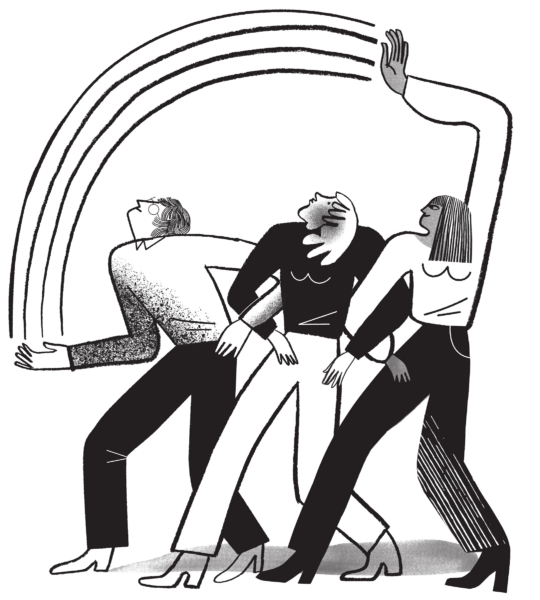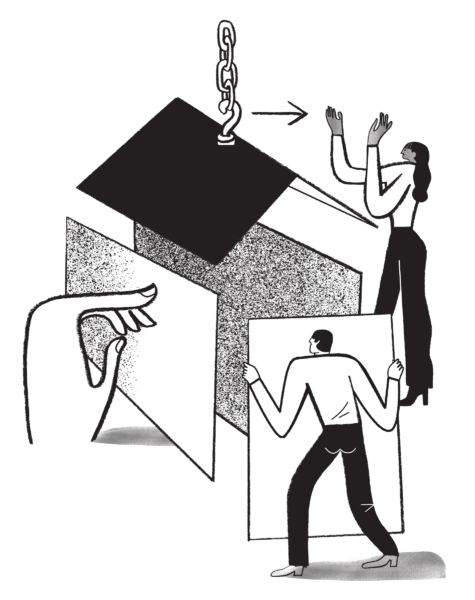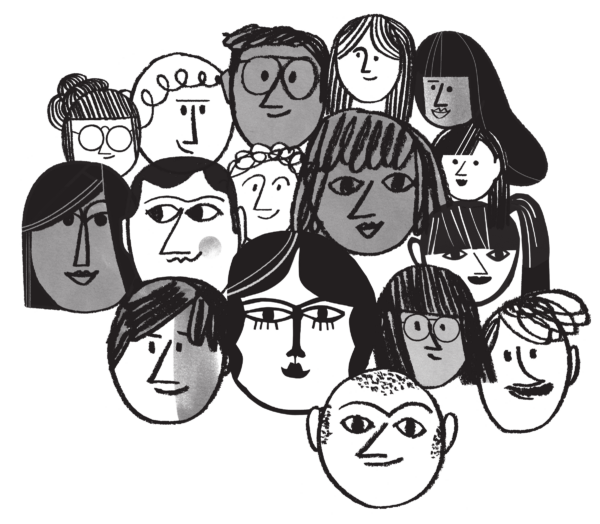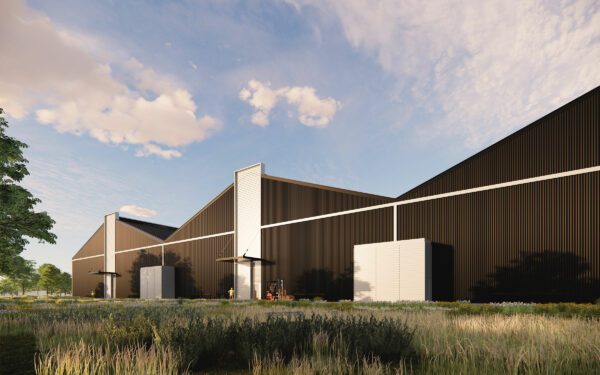Rosebank Distillery
A Sleeping Giant Awakens
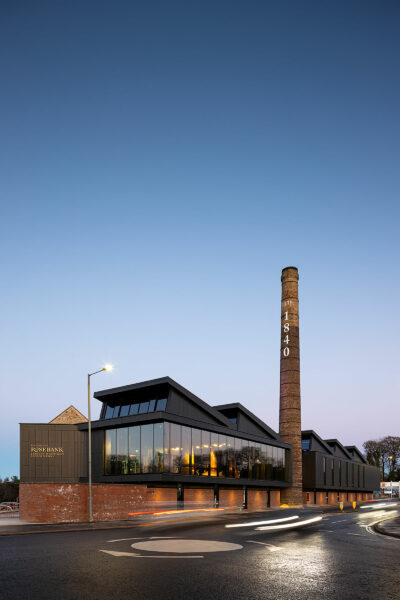
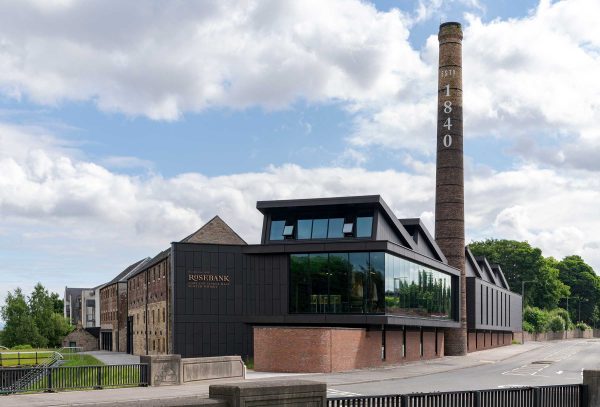
The incredible story of the Award Winning Rosebank Distillery's restoration. Reuse and preservation were prioritised and a stunning new distillery blending old and new was realised in 2024.
- Location Camelon, Falkirk
- Client Ian MacLeod Distillers
- Status Complete
- Services Consultancy, Architecture
- Photography Ross Campbell, Lee Mawdsley, Chris McLuskie
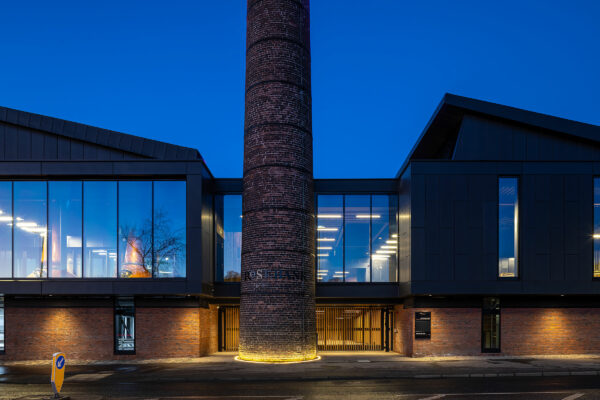
An historic distillery
Established in 1840, Rosebank was known as the ‘King of the Lowlands’ for its high-quality triple-distilled whisky. However, recessions, reduction in whisky consumption, two world wars, and soaring maintenance costs all took their toll. When the business eventually closed in 1993 the distillery was abandoned and fell into disrepair.
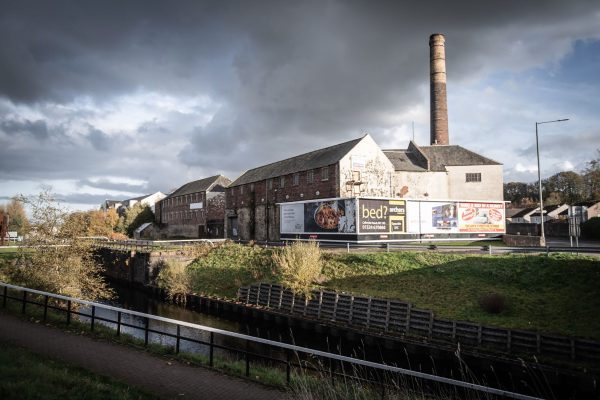
The distillery, photographed in 2018.
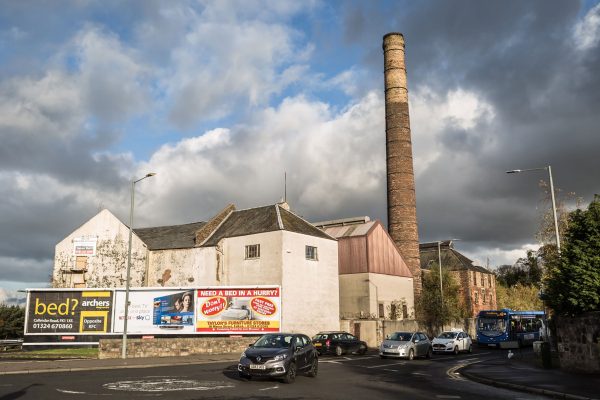
Disjointed buildings greeted you on approach.
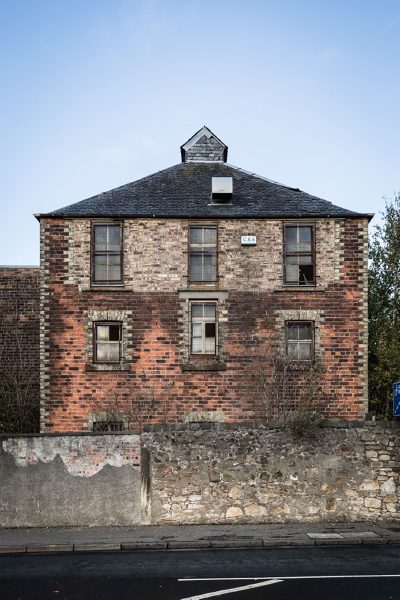
The original distillery buildings were in a poor state.
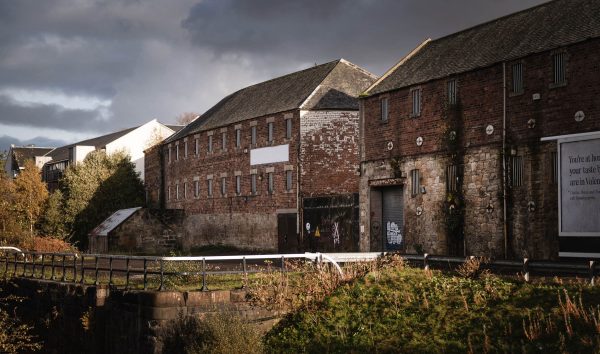
The warehouse buildings facing the canal were in the best condition.
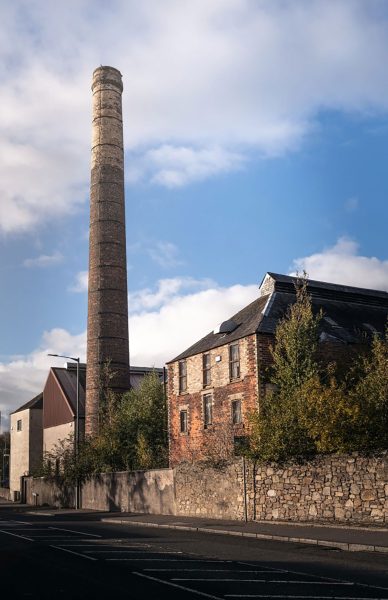
The distillery chimney is a local landmark.
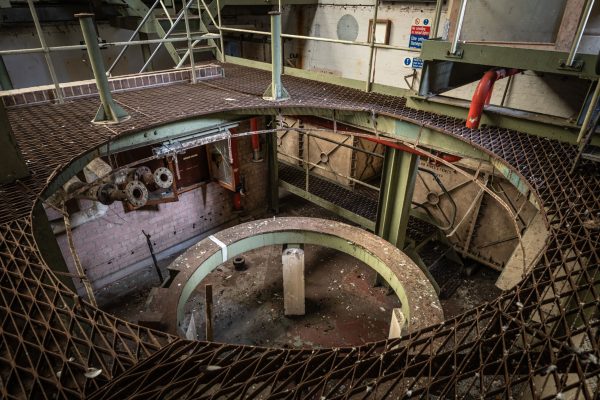
The gaping hole where the original stills once stood.
The Challenge
Acquiring the dilapidated site in 2017, MacLeod Distillers had the vision of reviving the iconic Rosebank brand and restoring its former home.
Located between the Forth and Clyde canal and a busy A road, restoring the crumbling distillery buildings presented numerous constraints and challenges.
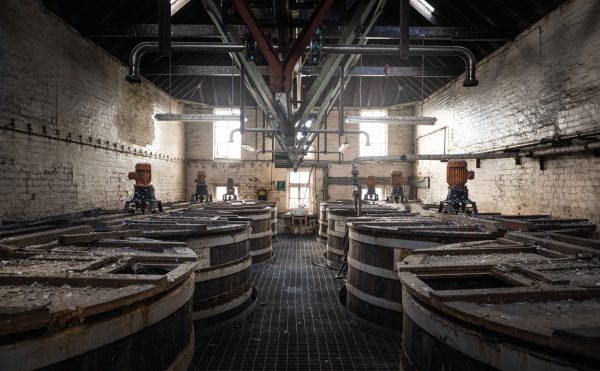
The mash tuns in the former mash house.
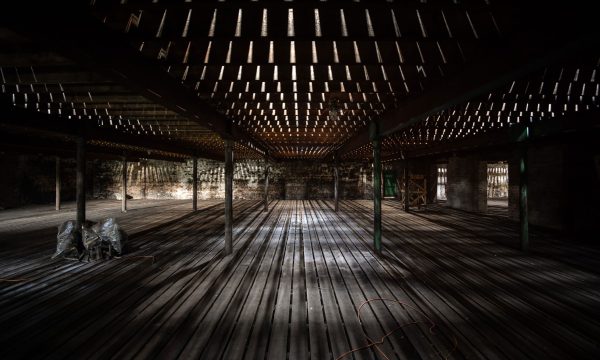
The warehouses provided an atmospheric space.
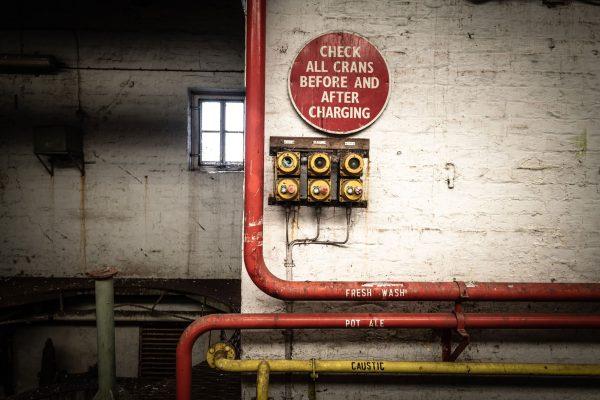
A lot of history was contained on the site.
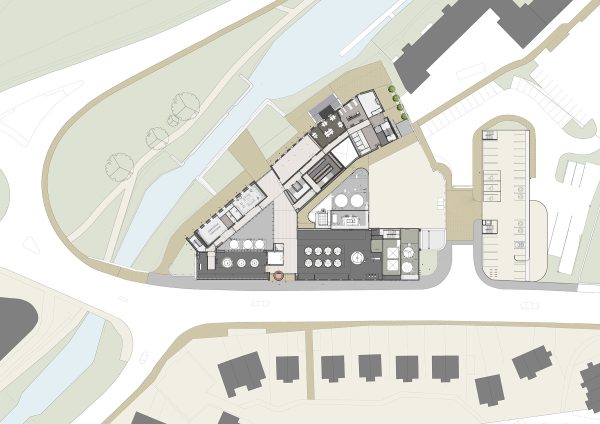
Proposed site plan / Level 01
The Approach
MLA had a lot of knowledge of the site, having worked with Scottish Canals on proposals to find new uses for the distillery since the 2000's. This experience led us to being appointed to transform the Rosebank site into a distillery fit for the 21st century and beyond.
However, around half of the site contained listed warehouse buildings whilst others were beyond repair. A blend of new and old was required to balance building preservation with modern building regulations.
A further consideration was ensuring the commercial viability of the new distillery. Since new whisky needs time to mature, creating an experiential hospitality destination was key to the success of the project. In addition to the working distillery the design required a visitor centre, academy, retail units, offices, and staff rooms.
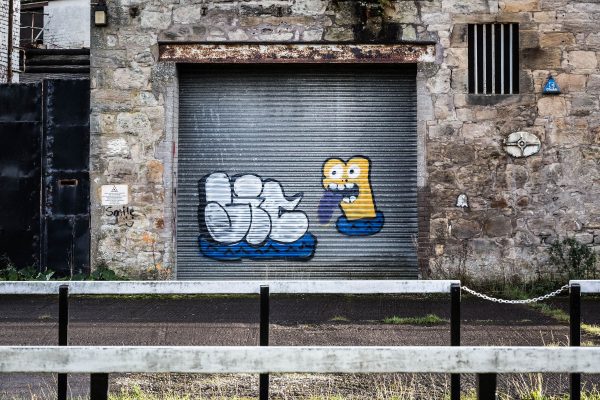

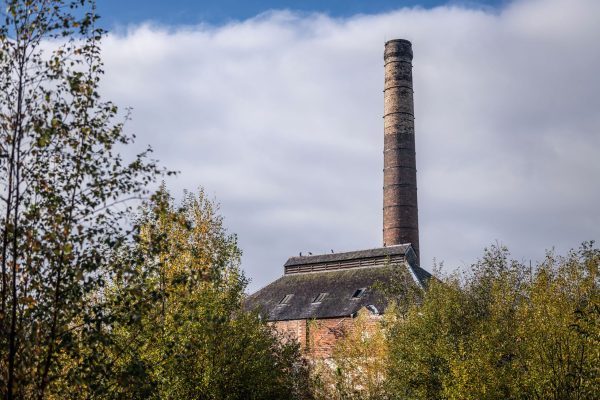
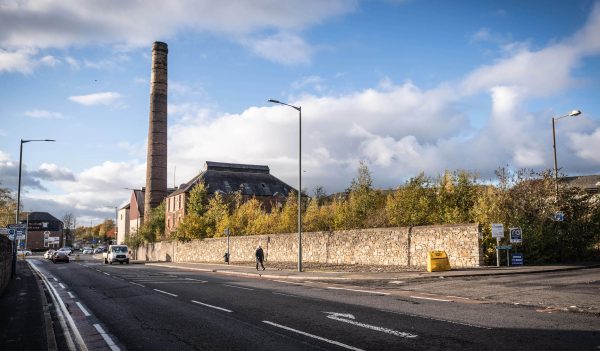
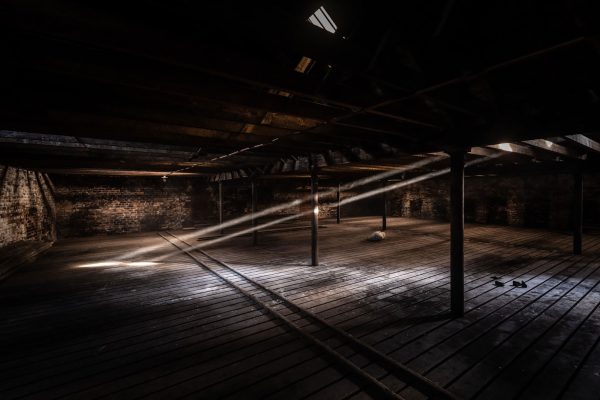
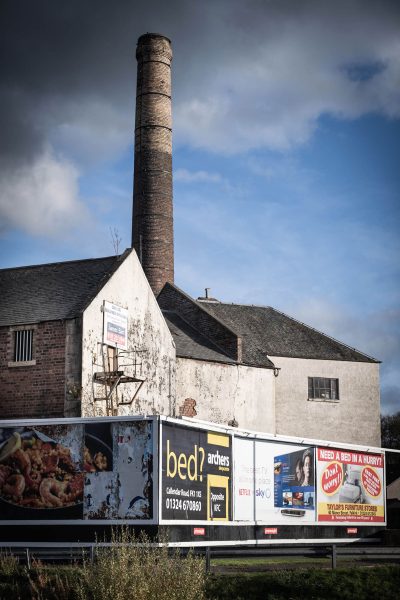
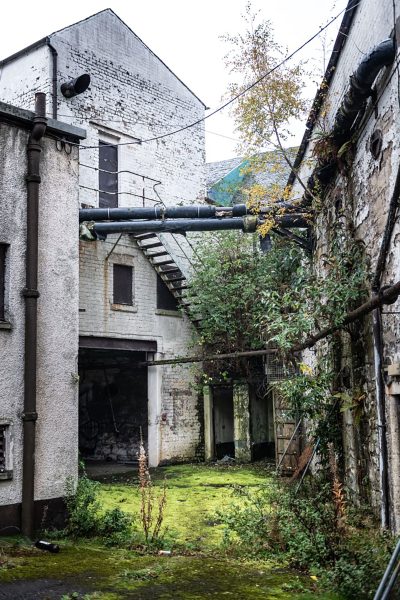
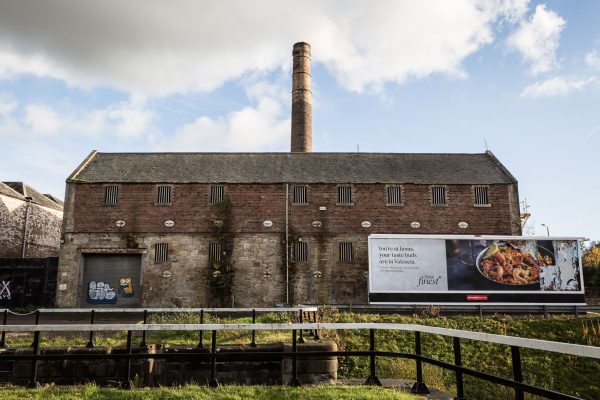
The Approach
A series of in-depth workshops and community engagement developed the brief and the company’s vision for the brand. It also identified the operational constraints and the commercial expectations of the project. Harnessing the wealth of knowledge across their operating distilleries was essential to lead the multi–faceted design team towards a collaborative single narrative.

Advanced BIM (Building Information Modelling) helped to secure the planning permission required. The software generated many visualisations and alleviated variations during the design development. Providing an essential collaborative tool for the build team, it also flagged potential health and safety issues for visitors to an industrial setting.
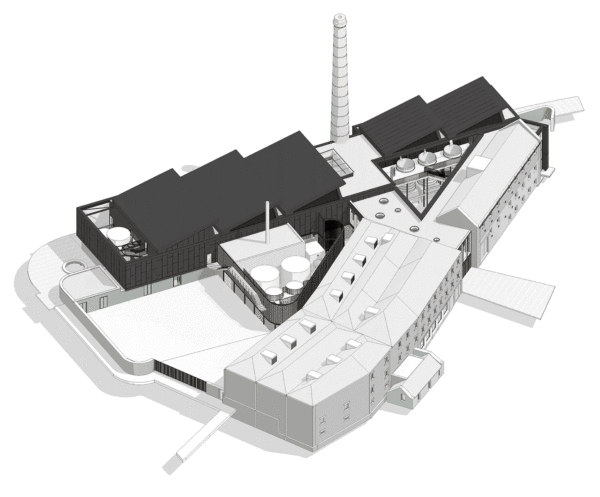
Design Solution
Honouring the heritage of the building, preservation and re-use were prioritised where possible. The malt store was restored with the stone remains of an earlier distillery malting from 1798-1817. Re-furbished and re-used original timber flooring was treated and re-used wherever possible. And along with re-purposed old beams, they create a dramatic entrance to the warehouse and a striking backdrop to The Tasting Bar.
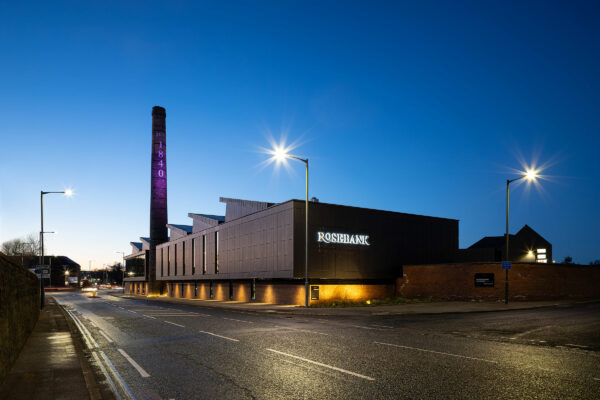
A new identity and local landmark.
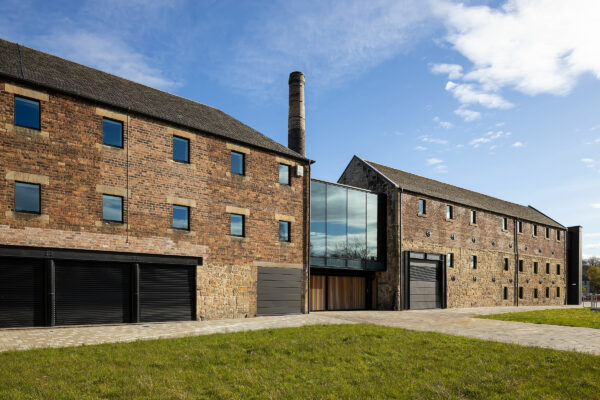
The restored and repurposed Malt Store & Warehouse

The new entrance hall.
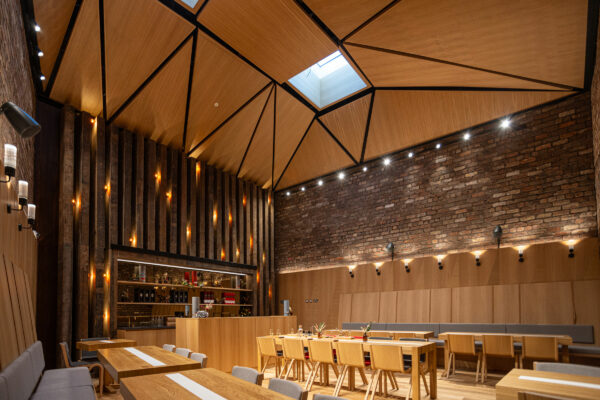
The Tasting Bar.
A local landmark, the 108ft famed chimney was restored and repaired. A traditional ‘dunnage’ warehouse, which ensures top-notch air circulation, was built from the bricks of the original. The original mill, dating back 103 years, has been retained and will continue to be used in the whisky production process.
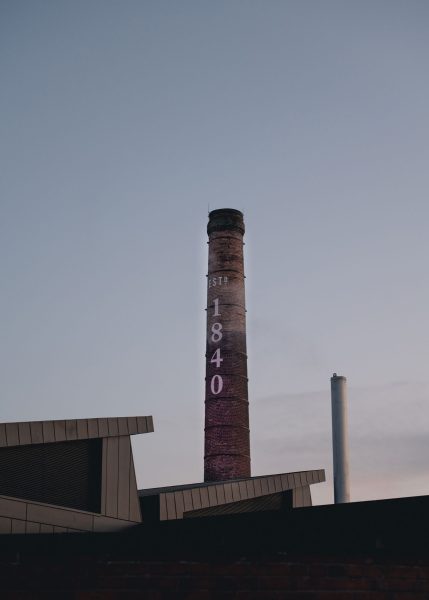
The famous chimney proudly states its heritage.
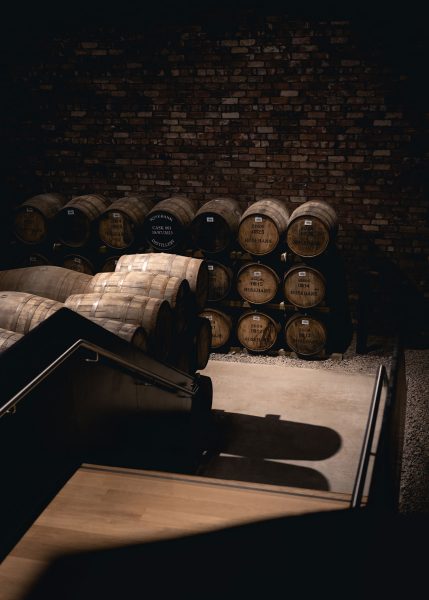
The atmospheric dunnage warehouse
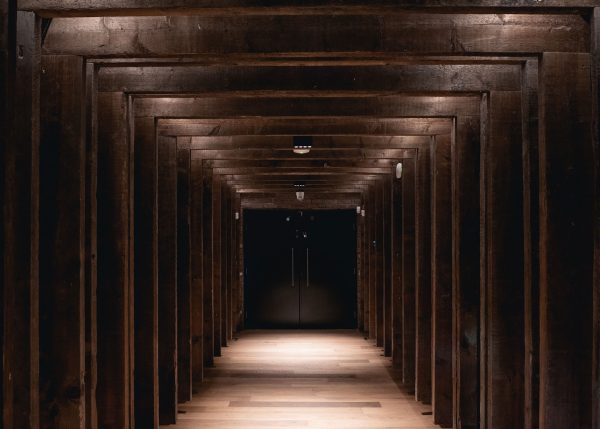
Reclaimed timber was used throughout.
The former lock keeper’s cottage, classed as a ‘Scheduled Ancient Monument’, was restored with guidance from Historic Scotland. Also on the canal-side, Victorian, red, brickwork buildings make up part of the all-important visitor centre, home to six tasting rooms.
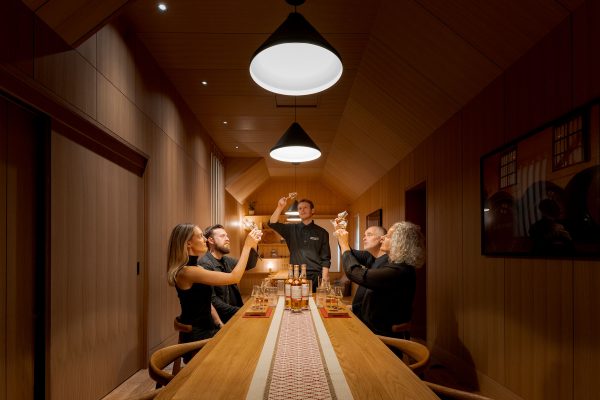
The Lock Keeper's Cottage provides an intimate setting for Whisky Tasting.
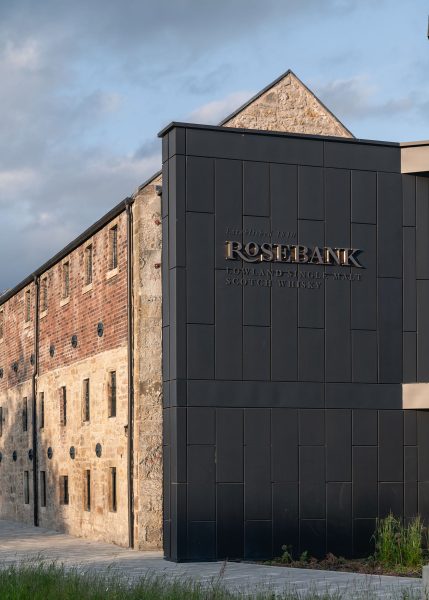
The mixture of materials, old and new, creates a dramatic composition.
Showcasing the three stunning pot stills, a full height glass frontage invites passers-by into the heart of the whisky-making process. Because whisky distillation involves high levels of heat, recirculation and re-use of heat has been designed into the build. And encouraging natural ventilation, the black zinc clad ‘sawtooth’ roof uses automated openings to manage heat released from the stills.
Compared to the disjointed original, the design of the new site facilitates linear production, improving efficiencies and safety.

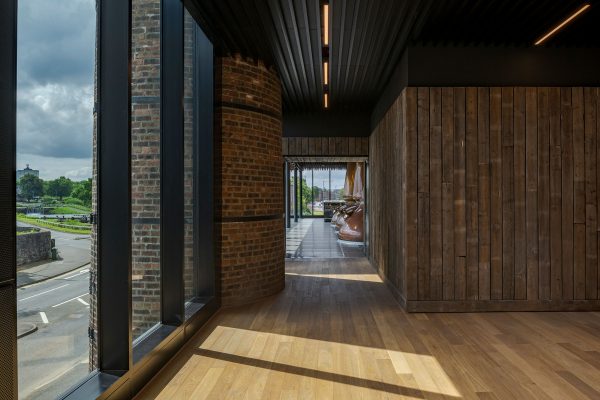
Entrance to the Still House

Historic features in a new environment.
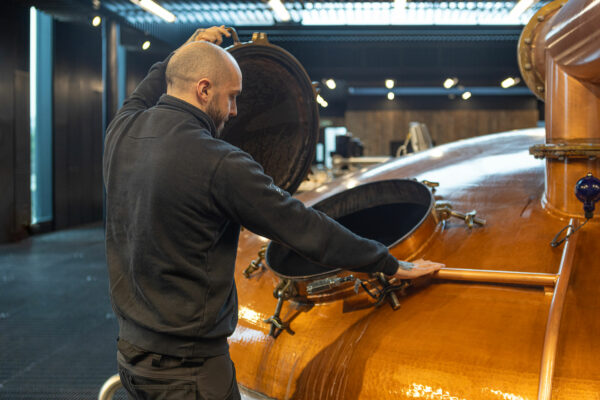
A distilling legend reborn.
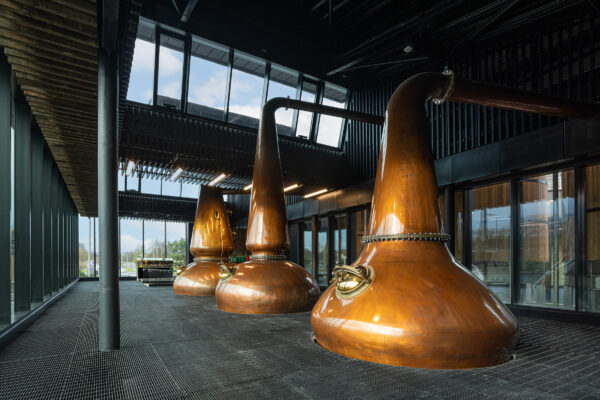
Outcomes
The development of the Rosebank Distillery secures a long-term future for the site and restores landmark buildings for a new era in whisky production.
Opening to the public in June 2024, its hoped that the distillery will welcome up to 50,000 visitors per year and enhance the local tourism offer considerably. New jobs have been created in distilling, retail and tourism with further seasonal roles as required. The distillery is on track to achieve the one million litres in production and there has been huge interest in the revival of the brand.
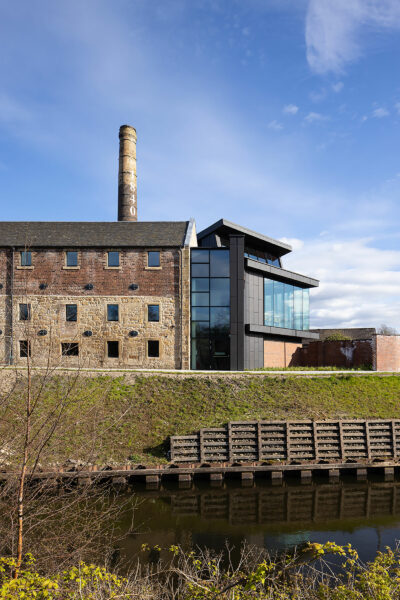
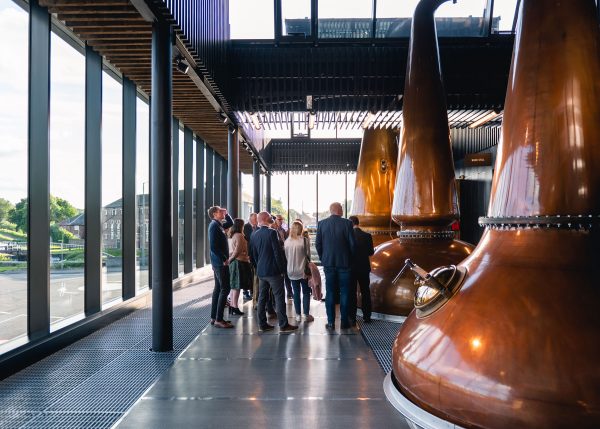
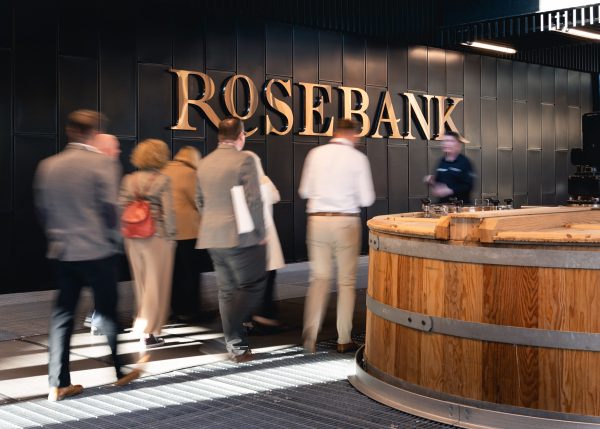
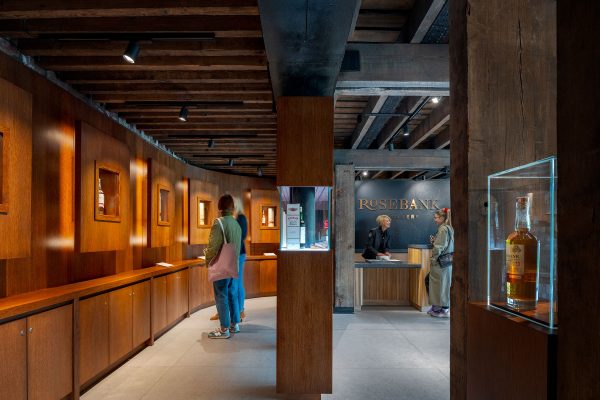
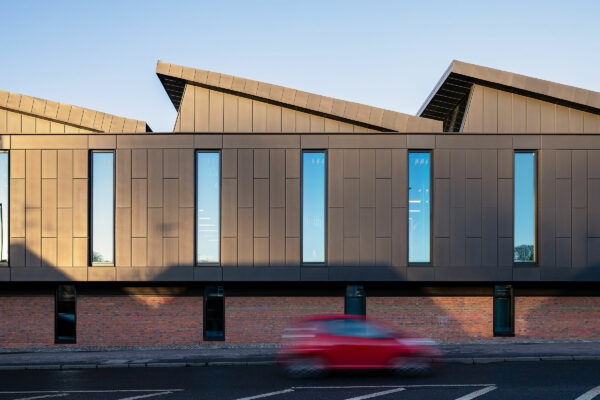
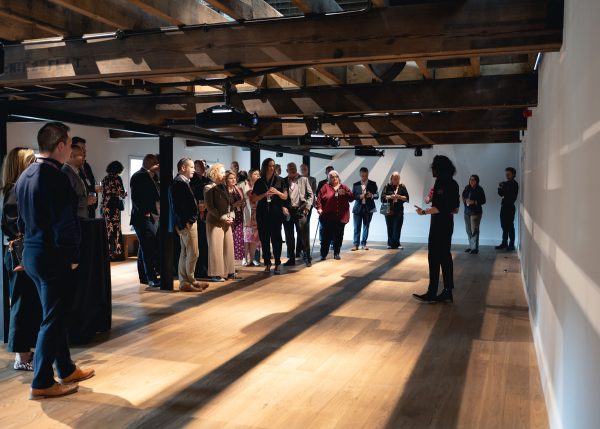
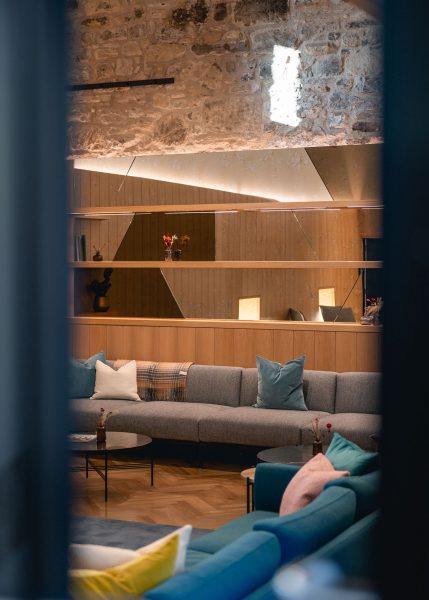
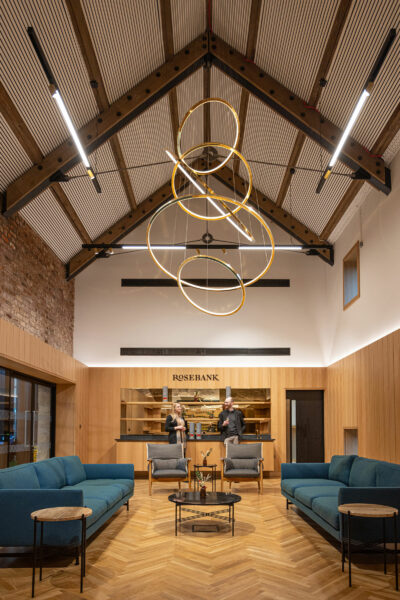
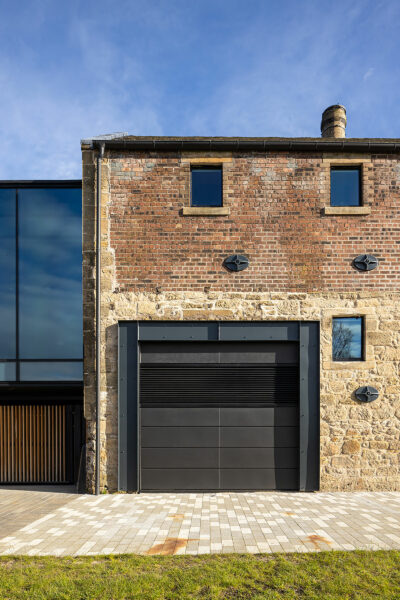
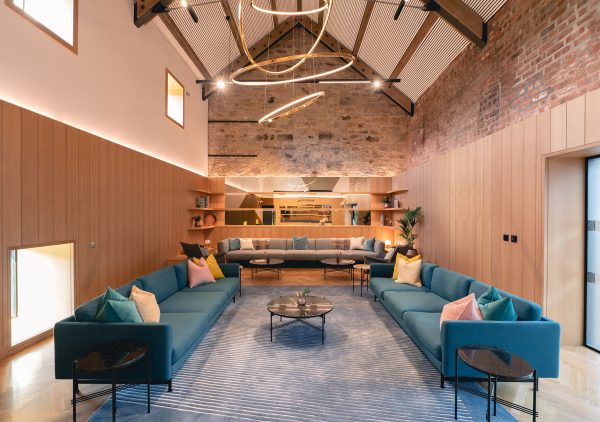
Work continues to improve the surrounding landscape, creating an attractive outdoor space for visitors and the community. The external area located between the visitor centre and the canal has been designated for community events including pop-up, artisan food markets. The adjacent newly grassed areas have been designated as a wildflower area to improve biodiversity.
Reflecting the historical context, the finished design blends the past with the future to stunning effect. A combination of artistic vision and engineering endeavour, the result is a testament to the passion and dedication of everyone involved.
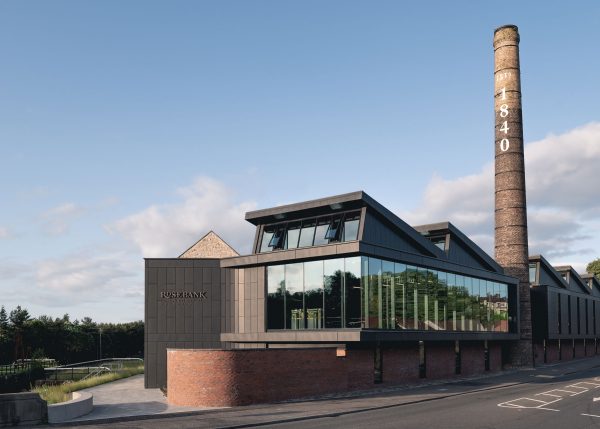
An icon, reborn.
Awards
- Scottish Design AwardsCommercial/Office/Hotel Building or ProjectGold Award Winner2025
- RIASArchitectural ExcellenceWinner2025
- Scottish Property AwardsArchitectural ExcellenceWinner 2025
- Architect's Journal Architecture AwardsEditor's ChoiceWinner 2024
- Architect's Journal Architecture AwardsLeisure ProjectWinner2024
- Mix InteriorsPublic Sector & Cultural InteriorsWinner2024
- Herald Property Awards for Scotland Best Regeneration Project - CommercialWinner2024
- Stirling Society of ArchitectsRegenerationWinner 2025


The distillery, photographed in 2018.
2
Disjointed buildings greeted you on approach.
3
The original distillery buildings were in a poor state.
4
The warehouse buildings facing the canal were in the best condition.
5
The distillery chimney is a local landmark.
6
The gaping hole where the original stills once stood.
7
The mash tuns in the former mash house.
8
The warehouses provided an atmospheric space.
9
A lot of history was contained on the site.
10
Proposed site plan / Level 01
11










A new identity and local landmark.
22
The restored and repurposed Malt Store & Warehouse
23
The new entrance hall.
24
The Tasting Bar.
25
The famous chimney proudly states its heritage.
26
The atmospheric dunnage warehouse
27
Reclaimed timber was used throughout.
28
The Lock Keeper's Cottage provides an intimate setting for Whisky Tasting.
29
The mixture of materials, old and new, creates a dramatic composition.
30

Entrance to the Still House
32
Historic features in a new environment.
33
A distilling legend reborn.
34











An icon, reborn.
46